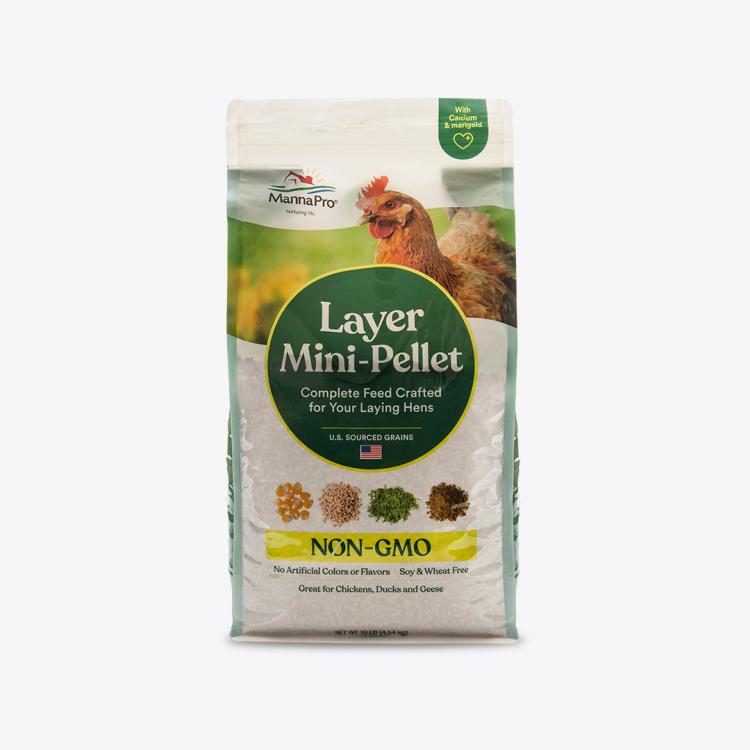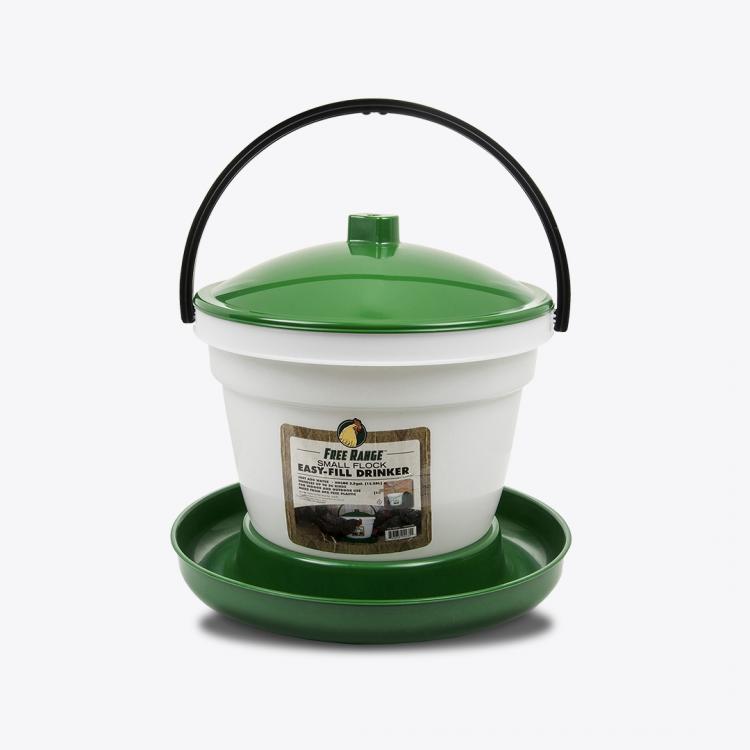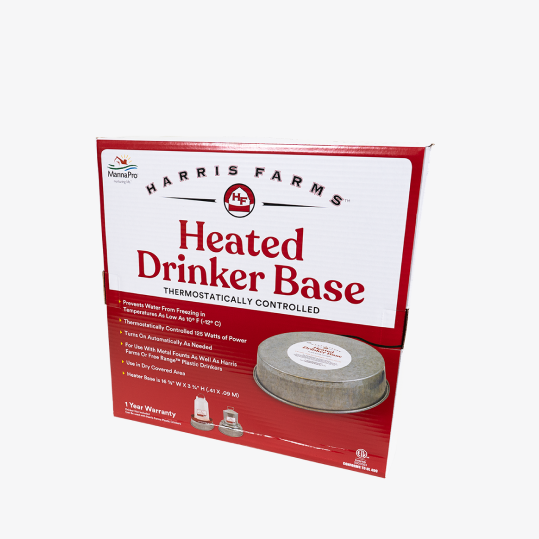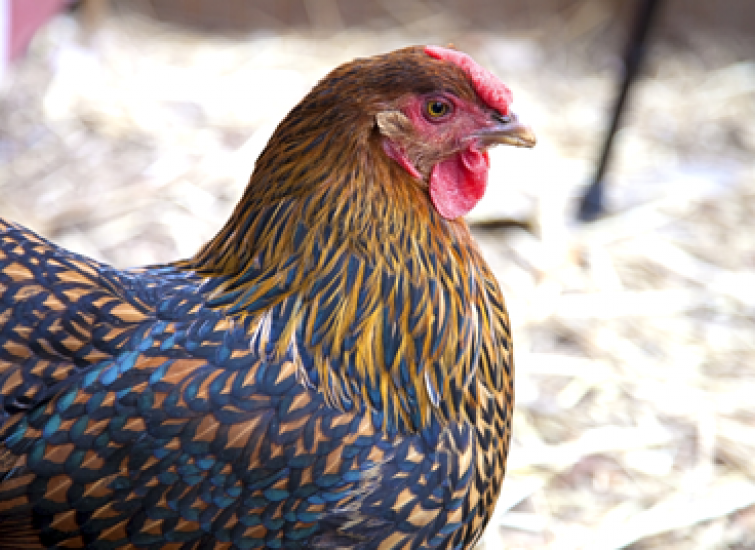Posted by Amanda Terbrock, Wed, Jul 10, 2019; updated Wed, Mar 15, 2023
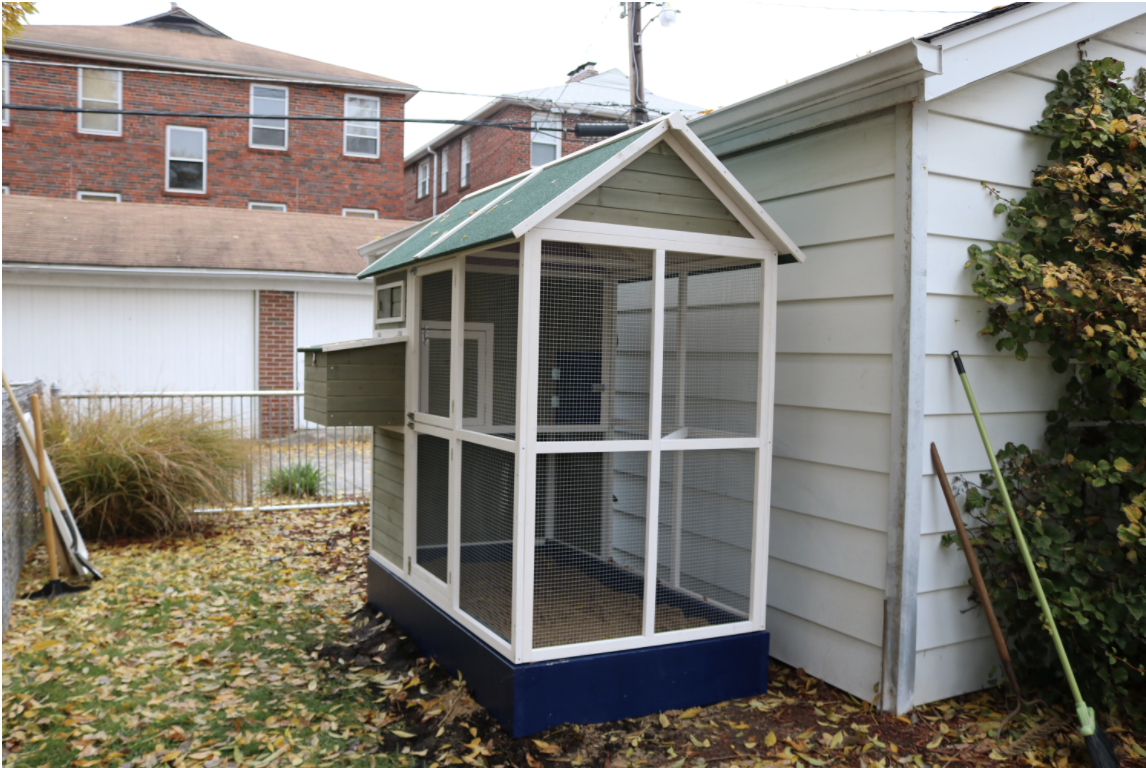
In 2018, my husband, Louie, and I decided we wanted to try our hand at raising chickens in the city. I grew up outside of Kansas City on spacious land, where we had room for a barn and pasture on which our horses and chickens could live and roam.
I have lived in the St. Louis area now for eight years, and I wanted to bring that idea of the barnyard to my backyard in the city. Now, one year later, I have a chicken coop with two full-size laying hens, two pullets and plenty of fresh eggs.
Are you thinking of getting backyard chickens? Are you wondering where to start? I’ve been there! And now I’m here to share some tips and tricks I’ve learned along the way when it comes to building a chicken coop and raising city chickens.
Top 10 Tips for Raising Backyard Chickens
1. Rules are Meant to be Followed.
The first thing I did was check to make sure our city ordinances allowed for chickens. You can find this information by going to your city hall’s official website or contacting them to inquire about the city’s code for raising backyard chickens.
Some cities have restrictions, such as how many chickens you can have, if roosters are allowed and where you can put your chicken coop. For example, there might be a city ordinance that mandates a minimum amount of space between the coop and your yard line. These rules are important to look up and follow when formulating your chicken coop design.
2. Be a Good Neighbor.
We have neighbors on both sides of our house, so before getting the chickens we spoke to them about our plans and where we would place our coop. Speaking with your neighbors first might help eliminate any fears or qualms they might have about living next to chickens in the city. Communication is key!
3. Selecting a Breed.
When my husband and I decided we wanted to get chickens, my parents had four different breeds at their house already, one of which was a Plymouth Rock.
We chose to raise Plymouth Rock chickens for a few reasons: we felt they were the friendliest of the group; they’re good sized when fully developed; and they lay large brown eggs.
Here are some guidelines for selecting the best breed for your family!
- Egg-laying: do you want to raise chickens for eggs? If so, choose a breed known for producing many eggs. Check out this blog for a list of fabulous egg-laying breeds.
- Egg color: some folks dream of creating a rainbow egg basket. If that is one of your goals, select breeds that produce colorful eggs, like those seen in this article.
- Space: consider the space you have available for your flock and select a breed that can enjoy the area you have. For example, Jersey Giant is a breed of enormous chickens that needs lots of space to run.
4. The Brooder.
The most important thing you should do before you pick up or order your chicks is make sure you have a brooder set up. A brooder is a small house with a heated lamp. Having a brooder already prepared and in place is important before you have your chicks.
The best place for someone in the city to put a brooder is in either a basement or a garage, if possible. This is because having a brooder set up in your home’s living quarters could increase the risk of spreading diseases such as salmonella.
Michigan State University suggests using pinewood shavings or chopped straw for bedding and keeping the brooder between 92° and 95° Fahrenheit.
5. Special Delivery.
After deciding what type of chickens we wanted to raise, we decided to order them from mypetchicken.com and go with fall chicks instead of spring chicks. There are not as many breeds available in stores during the fall compared to spring. For this reason, we ordered our Plymouth Rock chicks online.
The chicks were hatched on a Monday, boxed up on a Tuesday and safely in our hands on Thursday morning! It was so fun to hear their little peeps at the post office when we went to pick them up.
6. Chicken Coop Building.
The biggest word of advice I have for anyone getting chickens in the city is to have your chicken coop built or bought before the chickens arrive. If you don’t have the coop ready to go, it can get very stressful very quickly!
We wanted something functional that wasn’t going to take up too much of our time and energy to put together, so we bought a prefabricated coop. You can get these from a variety of places such as Orscheln Farm & Home, Tractor Supply or Amazon. It ultimately took us about 4–6 hours on a Saturday afternoon to get the chicken coop put together.
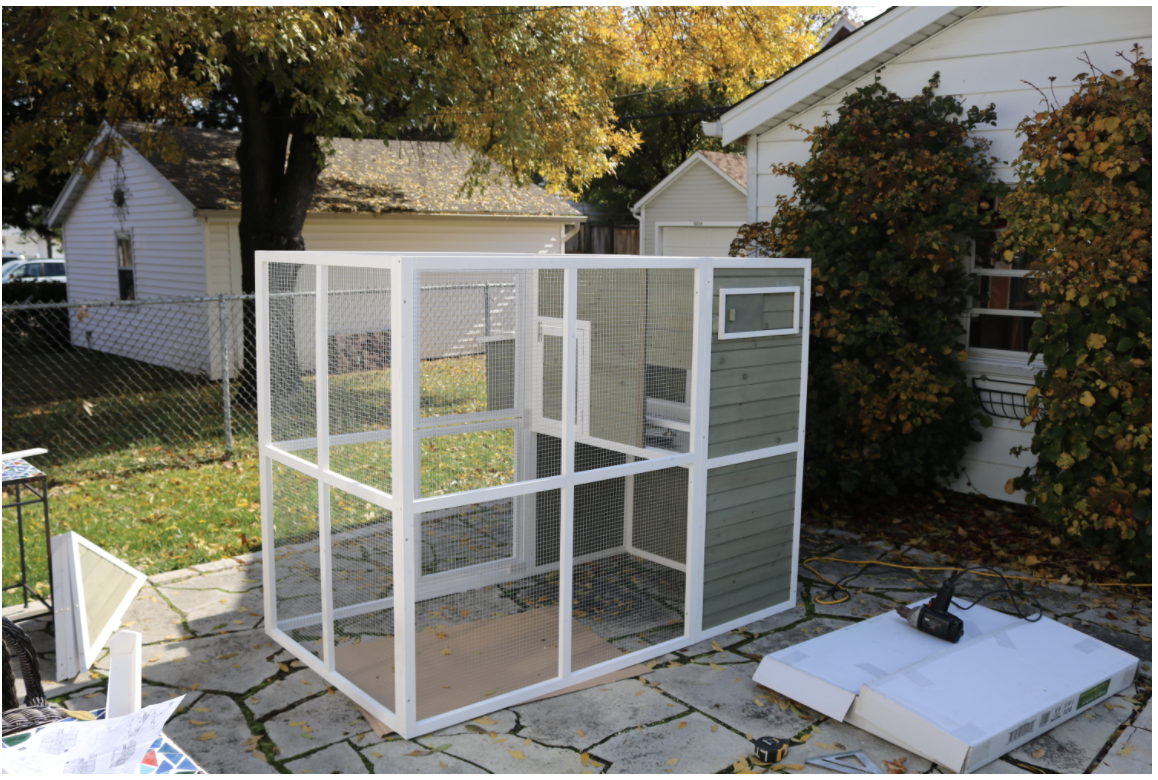
7. Coop Extension.
While we love the prefab chicken coop design we chose, we wanted to give our chickens a little more space to stretch their wings. To add more room, we built an extension with a chicken coop run.
What we did to construct the extension was rope off a square behind our coop and measure it. We then bought boards which my dad and Louie used to build a square extension that brushed up against the prefab coop and our garage. A ramp that extends from the hen house to the extension was also built, along with a door. The door was added so that the chickens would be free during the day to go in and out of the coop to lay their eggs and roam around.
Garden wire (not chicken wire) was stapled to the boards to secure the enclosure. The coop plus the expansion came out to approximately 10'x10', or 100 square feet of space for four chickens.
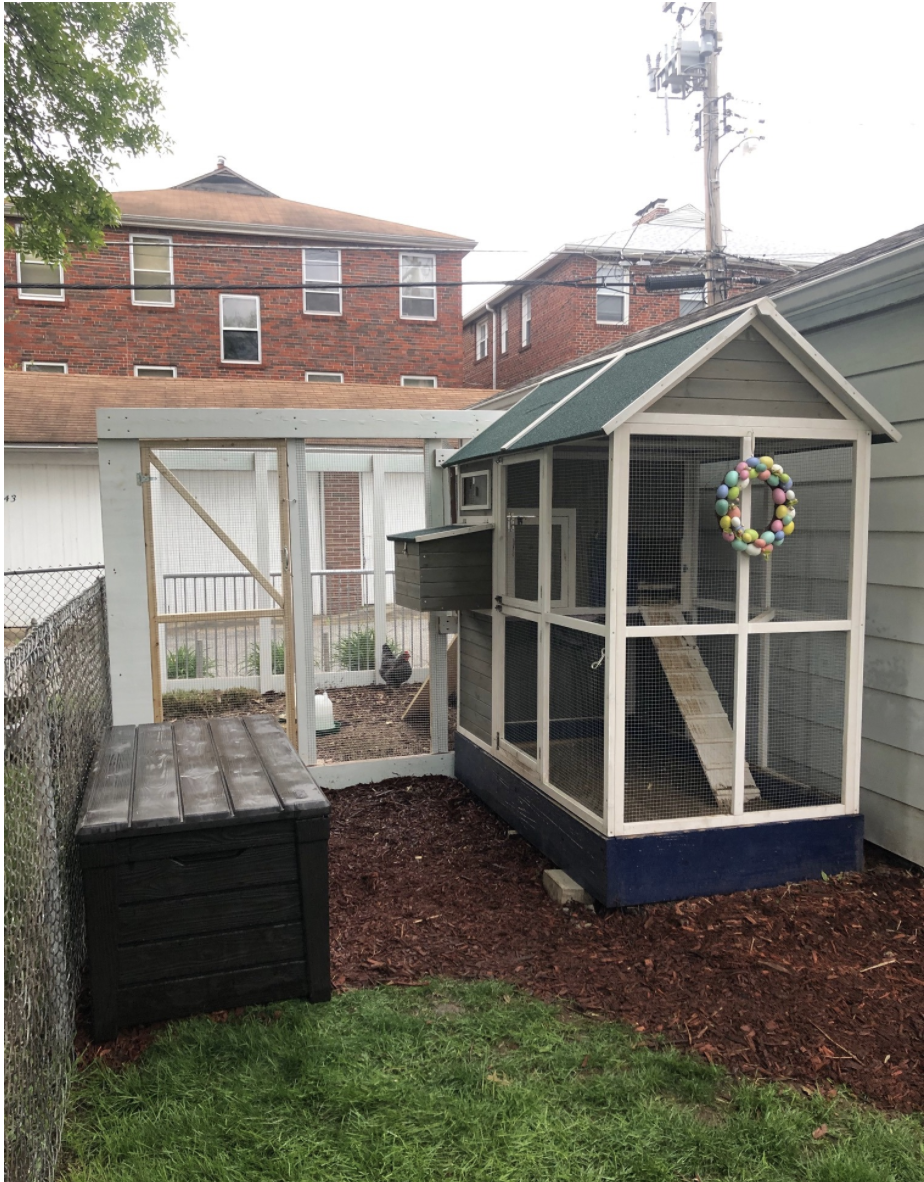
8. Coop Modifications.
In addition to the extension, we made a couple of other modifications to our chicken coop. Pouring cement as the base of the coop was not an option for us, so we decided to place a box (similar in size and shape to a raised garden bed) under the coop.
I love the box for three reasons: it holds about eight inches of sand and makes cleanup with a cat scooper very easy; the chickens love to roll around in the sand and it acts as soft bedding for them; and nothing can dig in or out of the coop. Chickens like to scratch, and if the coop were directly on the ground it could get very muddy and dirty inside.
The second modification we made was adding a roof onto the extension. We’re not as worried about hawks or air predators given where we are in the city, so instead of a heavy-duty roof we bought a $40 sunshade off Amazon and attached it to the boards ourselves. I love the sunshade roof because it’s not completely solid and lets in some sunshine without it getting too hot. It also lets in a little rain, which helps keep things fresh.
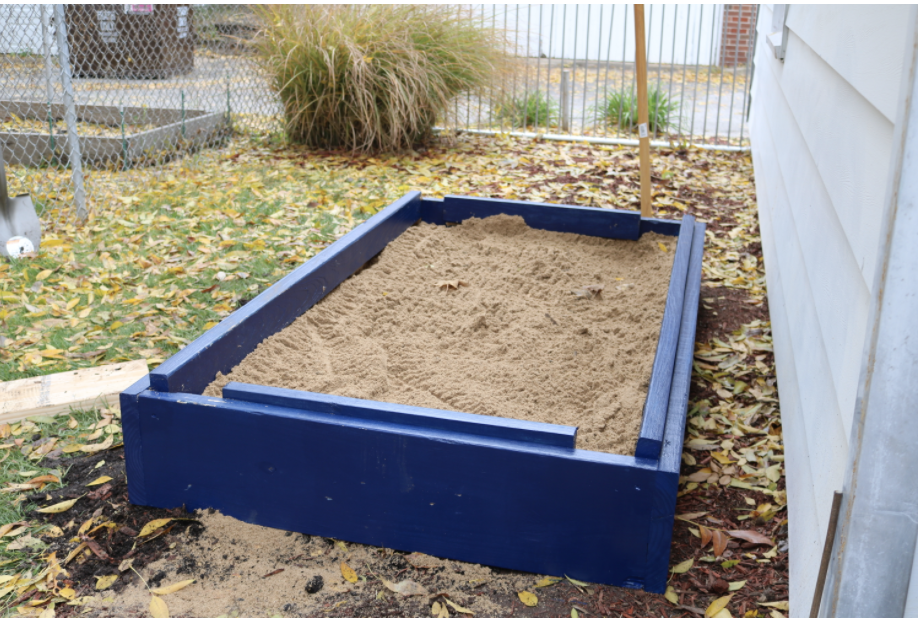
9. Bedding.
For bedding in the extension, we raked up the grass, leveled out the ground and poured pine mulch. We did this for the same reasons we added the box with sand: it keeps the coop tidy and makes for easy cleanup.
To clean it, once a week we rake it all up to the center, pick out the waste and then redistribute it around the extension. I think it also helps keep the chickens entertained. I throw a handful of mealworms and a handful of scratch into the pen on top of the mulch each morning, and that gives them something to peck at or scratch throughout the day.
10. The Inside Coop.
Another chicken coop tip is to make sure you buy a coop with windows and doors so you can keep them open and maintain good ventilation. To keep the odor at a minimum, I sprinkle in Manna Pro® Coop ‘N Compost™ and mix it with the sand.
When determining a location for your chicken coop, make sure you’re able to run an extension cord to it so that you can have a safe panel heater in the coop during cold winters and a fan to keep air moving during hot summers.
Now, are you ready to get started? Check out the links below for more ideas and resources.
Connect with Fellow Chicken Owners on City Yolks
Connect with other urban and backyard chicken owners on City Yolks Instagram and Facebook, and be sure to subscribe to the YolkTube by City Yolks YouTube channel for coop designs, predator protection ideas, biosecurity best practices and more.

